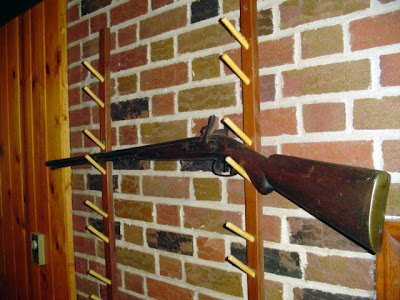 Salisbury in the Revolution
Salisbury in the Revolution
The war history of Salisbury before the First World War can be told in a few words. The people here have always been for peace, although it furnished some troops to both the Confederate and National armies during the Civil War and a number of its young men went to the front as volunteers during the Spanish-American War. The only time its people, however, came face to face with “grim visaged war” was during the Revolution, and this incident cannot be said to exactly redound to the patriotism of some of its inhabitants. Nearly all of the settlers were either descendants of or were connected with the English gentry and were intensely loyal to the King in his quarrel with the thirteen colonies. When Washington took the field many became Tories, as such sympathizers were called, and they started an armed insurrection under the leadership of a man of gigantic stature named Ben Allen. For a time they terrorized the patriots and on February 18, 1777, General William Smallwood, the commander of the famous Maryland Line in the Continental Army, was sent by Washington with a body of troops. He established headquarters at Salisbury and prepared to give battle, but it resulted in little more than a brisk skirmish in which Allen was shot through the head, dying instantly. His followers fled ignominiously, but many of them were captured. Other sympathizers with the King were arrested, and for a time the jails of Annapolis and Cambridge were filled with prisoners. But the death of Allen put an end to the hopes of the loyalists and this was their first and last attempt to resist the American troops. Allen, so far as history tells us, was the only man killed in the skirmish, and was buried in the yard of St. Peters Church. During later construction, in 1925, when a recess chancel was added to the church, the workmen disinterred a gigantic skeleton. The skull was in a remarkable state of preservation and upon a close examination a bullet hole was discovered to have pierced it through and through. On account of the large size of the skull, the fact that Allen had been shot in the head and the fact that he was buried in St. Peter’s churchyard, though his grave was unmarked, the reasonable supposition is that the skull belonged to him. Since St. Peters also owned Parsons Cemetery, the graves were moved there.

8 comments:
Any chance the community of Allen was named in honor of Ben Allen?
What is odd is if you go south from Salisbury and into the Princess Anne and Pocomoke City area you'll find a lot of people that are of Irish descent. I highly doubt those people were Tories. Has anything been written about them?
3:10 --
They were expelled from Salisbury by the loyalists. Times really have not changed since then, have they.
I live in Pocomoke City and my mother's family was from Somerset County. Most of our ancestors were of Irish heritage but they arrived after the Revolutionary War.
Our Great Great Grandchildren will read about our Revolution against the tyrant KING OBAMA.
I love this article and this was written well.
There were far more Irish slaves then those of African descent and yet their story is never told.
Anonymous said...
There were far more Irish slaves then those of African descent and yet their story is never told.
January 14, 2017 at 9:45 AM
BINGO
I miss you George. I rode by your house tonight and thought about you. I will say a prayer for you at Mass tomorrow.
Post a Comment